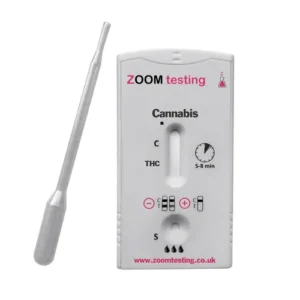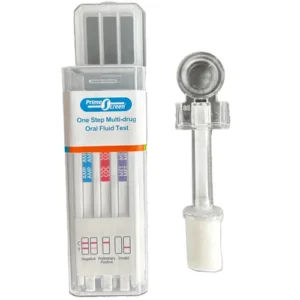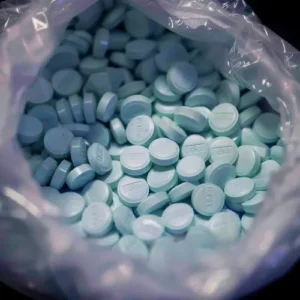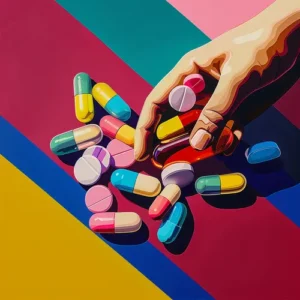Zoom Testing is a leading drug testing company in the UK. In particular, we specialise in cannabis drug testing. In this article we explain more about the drug before giving information on the best types of cannabis drug test kits.
What is Marijuana? What is Cannabis?
Cannabis is known by many names. In the United States, the drug is known as marijuana. It is also known as spliff, weed, grass, pot, puff, draw, dope, hash or wacky backy. In the UK we generally call it Cannabis (which is the agreed international term used in much legislation.) It is one of the most controversial illegal substances around the world today.
What Is The Cannabis Plant?
To understand the difference between the terms marijuana and cannabis, it’s important to realise that marijuana is not a plant of any kind. Marijuana is simply a name used to describe the dried flowers or leaves of a specific type of Cannabis plant. Cannabis itself is a group of flowering plants. Within that group are specific cannabis plants such as Cannabis Sativa. If you pick the leaves or flowers of a Cannabis Sativa plant and dry them out, they will usually be referred to as marijuana.
Cannabis isn’t always used for its leaves, however. In addition to the leaves (the least powerful drug from the cannabis plant which are smoked or sometimes eaten), cannabis plants excrete a thick sap-like resin which can be compressed, dried, and formed into small cubes used for smoking or eating—these cubes are known as hashish. Even more potent than hashish, naturally occurring oil from hashish called hash oil can also be obtained from cannabis plants and is also used for smoking.
Where Does the Term Marijuana Originate?
The term cannabis dates back as far as 440 BC where it was mentioned in Ancient Greek texts in relation to recreational use.
The word marijuana, on the other hand, has not been around for nearly that long. According to the Oxford English Dictionary, the first time marijuana was ever used in an English recording was toward the end of the 19th century.
The most likely origin for the term marijuana is most likely from somewhere in present-day Latin America. Most agree that the term marigu-ano, a Brazilian Portuguese word that means “intoxicant” or the Mexican Spanish word mariguana are the original sources of the term. A slightly more colourful explanation for the origin of the word, though less likely, is that it came from the Mexican military slang term “Maria Juana” (Mary and Jane) which, at the time, meant prostitute. Regardless of the early origins, by the 1900s the term marijuana was frequently used in Mexico and eventually made its way into the English language shortly thereafter.
Cannabis is the most commonly used drug among 11-25 year olds.
What Does Cannabis Look Like?
Cannabis comes in many forms. Resin, a thick substance that can be taken from the plant, is a hard brown substance that has a slight resemblance to liquorice. More commonly the seeds, stalks and leaves of the plant (often referred to as grass or weed) are a brown or dark green colour slightly resembling tobacco when dried. A dark oil taken from the plant is also fairly common.
How Do Users Take Cannabis?
The most common way to take cannabis is by smoking. The leaves, stems, and even flowers of the plant are dried and often rolled into cigarette paper (commonly referred to as a joint or spliff) before being smoked. Some users smoke the leaves directly in special pipes or other devices like bongs and hookahs.
Many users seek a more intense experience when using cannabis and prefer to cook and eat the leaves or steep them in tea to be drank. While the effects are stronger, they are also harder to control when not smoked.
What Short-term Effects Come From Cannabis Use?
Once inhaled, drank, or eaten the effects that cannabis has on users is almost instantaneous. Users start to become more relaxed, less socially anxious, and begin to laugh, talk, and giggle more than they would.
Using cannabis not only affects the mood of users; once taken concentration levels can drastically decrease and short-term memory loss is often a common symptom. Some research has shown that it can lower fertility levels in women as well.
A lack of energy, motivation, and paranoia are often encountered with cannabis users and—in a addition to a slowed reaction time—there are a lot of vehicular accidents when smoking cannabis Is involved.
How Does Cannabis Effect Users in the Long-term?
Because the mainstream advocacy of cannabis is a relatively recent event, it’s difficult to say what the exact long-term effects cannabis will have on users will be. Many of the studies being conducted now, however, show that smoking cannabis—just like smoking cigarettes—can cause lung and respiratory infections, heart problems, and addiction.
Another study has revealed that there could be a very powerful link between cannabis use and negative effects on mental health. Sudden mood swings, irritability, and irrational behaviour have been observed in many experiments in the last 20 years.
What Class Drug Is Cannabis?
In the United Kingdom the government made a change the drug classification for cannabis, and it change from a class C drug to a class B drug in 2009. The top penalty for possession of Cannabis is 5 years in jail, with an unlimited fine. The top penalty for supplying the drug is a jail term of up to 14 years, with an unlimited fine.
Legalisation and Decriminalisation Trends
In recent years, many countries have moved towards decriminalising or legalising cannabis. This has prompted debate around the benefits and drawbacks of such policy changes.
Those looking to legalise weed argue that legalisation allows for proper regulation of cannabis quality and sales. It also frees up law enforcement resources and prevents people from having criminal records for minor cannabis possession. Tax revenue from legal sales can also benefit government budgets.
However, many critics worry that and “loosening up” of the law will cause more widespread use, including by children. They argue that cannabis impairs cognitive abilities and that more access will lead to negative public health outcomes. There are also concerns that cannabis can be a gateway to using more dangerous drugs.
The trend towards legalisation change can be traced back to the US. In 2012 when Colorado and Washington became the first U.S. states to legalise recreational cannabis. Since then, over a dozen more states have followed suit. Numerous countries like Canada, Uruguay, and South Africa have also legalised adult recreational use.
In the U.K., cannabis is still illegal but police in some areas no longer target individuals for possession of small amounts. There is growing pressure for more comprehensive law reform around cannabis laws in Britain. The government has been resistant so far but agreed to some changes allowing for medical cannabis use.
Urine Drug Testing for Cannabis
Urine drug testing is one of the most common methods for detecting cannabis use. This is because the main psychoactive compound in cannabis, THC, can be detected in urine for an extended period after use.
A standard urine drug test for cannabis looks for THC-COOH, a metabolite produced when the body breaks down THC. Most urine tests use immunoassay technology to detect this metabolite. The test strip or cassette contains antibodies that bind to THC-COOH in the urine sample. This triggers a color change on the test strip indicating a positive or negative result.
Urine drug tests have established cut-off levels for a positive detection of cannabis. A screening cut-off of 50 ng/mL is typically used. This means a urine sample must contain at least 50 nanograms per milliliter of THC-COOH to test positive. A 15 ng/mL cut-off may be used for confirmatory testing by more sensitive methods like gas chromatography/mass spectrometry (GC/MS).
Factors like the user’s cannabis intake frequency, metabolism and body fat percentage impact the detection window for urine testing. For occasional users, cannabis can be detected for up to 3 days after last use. For chronic heavy users, detection is possible for a month or longer after last use. On average, cannabis can be detected in urine for around a week after moderate use.
Drinking extra fluids or using adulterants to try to “flush out” cannabis from the system is not considered effective. However, hydration level can influence the concentration of metabolites. Dilute urine below the screening cut-off may test negative if the person has not used cannabis recently.
Urine drug testing can be performed at home using testing kits or strips purchased online or from pharmacies. The sample is collected in a provided container and a few drops are applied to the test strip or cassette. Results are ready within 5-10 minutes.
At Zoom Testing we offer single drug testing kits for cannabis, which are very reliable and a popular choice for many customers. All of our multi drug dip cards will test for cannabis, alongside a number of other common drugs of abuse.
Urine Drug Tests From Zoom Testing
The following urine drug tests are all perfect for cannabis drug testing and are recommended choices from Zoom Testing, the UK drug testing experts. These tests are normally kept in stock, allowing us to send them out to you on the same day you order!
- Cannabis Drug Test (THC)
- 10 Panel Drug Test with Integrated Cup
- 13 Panel Drug Test with Integrated Cup
- 18 Panel Drug Test with Integrated Cup
Saliva Drug Testing for Cannabis
Saliva drug testing is another common method used to detect cannabis use. This testing analyses oral fluid to look for the presence of THC and its metabolites.
Saliva testing can detect very recent use of cannabis. THC appears in saliva almost immediately after smoking or ingestion. It typically remains detectable for 1-3 days after last use. However, chronic heavy users may test positive for over a week.
Oral fluid testing is best suited to determine impairment from recent cannabis intake. It does not detect long-term or residual THC that may be present in urine or hair samples. The short detection window makes saliva testing ideal for workplace testing situations.
Saliva drug tests utilise immunoassay technology similar to urine tests. The test strip or cassette contains antibodies that bind to THC and metabolites in the saliva sample. This triggers a color change indicating a positive or negative result within 5-10 minutes.
Initial screening cut-off levels for oral fluid cannabis tests are typically around 25-50 ng/mL. Confirmatory GC/MS testing uses a lower 10-15 ng/mL cutoff. Factors like the sensitivity of the specific testing method used can influence cutoff thresholds.
Oral fluid testing offers some advantages over urine testing. Sample collection is easier and less invasive. Adulteration or tampering is almost impossible with directly observed collection. Testing can also be performed anywhere without requiring bathroom facilities.
However, saliva testing has some limitations. The shorter detection window means very recent use can be missed. Screening cut-off levels are also higher compared to urine, so low-level or occasional use may not be detected. Proper sample collection technique is important to get an adequate volume of saliva.
At-home saliva drug test kits are available for cannabis screening. The user simply swabs the inside of their mouth, then inserts the swab into a testing cassette. Some kits include an adulteration strip to check for potential sample manipulation. Results are displayed within several minutes. Our most popular saliva drug tests are the 3 in 1 Saliva Drug Test, as well as the 7 Panel T-Square Oral Fluid Saliva Drug Test Kit
Saliva Drug Tests From Zoom Testing
Zoom Testing, the leading UK drug testing kits supplier, recommends these oral fluid drug tests for accurate and efficient cannabis detection.
- 3 in 1 Saliva Drug Test (Oral Fluid Testing Kits)
- 6 Panel Oral Fluid Saliva Drug Test Kit
- 7 Panel T-Square Oral Fluid Saliva Drug Test Kit
- 12 Panel T-Square Oral Fluid Saliva Drug Test Kit
Emerging Products and Methods of Use
Alongside legalisation, new cannabis products and methods of consumption have proliferated. This includes edibles, vaping, concentrates, and topicals.
Edibles containing cannabis like chocolates, baked goods, and candies have become very popular where legal. They provide a smoke-free way to consume cannabis. However, the effects can be difficult to control due to ingestion through the liver.
Vaporisers that heat cannabis just below combustion allow inhalation of cannabinoids without smoke. This reduces lung irritation but the long-term health effects of vaping are still unclear.
Concentrates like cannabis shatter, wax, and hash oil contain very high THC levels distilled from cannabis resin. This results in a strong, fast-acting high. There are concerns about how safely these concentrates are manufactured.
Topicals are creams, lotions, and balms infused with cannabis. They are used to treat localized pain but do not cause a cerebral high. The potential therapeutic benefits of topicals are being researched.
Workplace Considerations
With changing laws and new products, workplaces have had to adapt their drug policies around cannabis. Some companies in legal jurisdictions have stopped testing for or disciplining cannabis use. However, safety-sensitive industries like transportation often maintain zero-tolerance policies.
Employers in places where recreational use remains illegal also face challenges. With more access to cannabis, positive drug tests have increased. But companies must balance safety with losing talent unnecessarily in a tight labor market.
Many workplaces now only test for reasonable suspicion or after accidents. Rather than just testing for cannabis presence, impairment testing at work is also evolving. Quick oral fluid swabs can now detect recent use while avoiding concerns over private data from urine or hair testing.
Treatment Options
As cannabis use becomes more prominent, there is increased focus on treatment options for problematic usage. While cannabis is not considered as addictive as other substances, researchers estimate that up to 10% of users develop a dependence.
For those seeking to cut back or abstain from cannabis, both behavioral and pharmacological interventions are available. Counseling helps identify triggers and develop coping strategies. Support groups can also be beneficial.
Certain medications may curb cannabis cravings and withdrawal. These include antidepressants like Zoloft and Buspar. The synthetic cannabinoid dronabinol also shows promise in reducing withdrawal severity.
Treatment often starts with a detox period to clear cannabis from the body. This is usually managed on an outpatient basis but residential inpatient treatment is sometimes required for heavy users. Overall, a combination of therapeutic modalities tailored to the individual offers the best chance of overcoming problematic cannabis use.
Photo Credit: “Leaf” by Anthony Cunningham for Zoom Testing
Zoom Testing is a leading UK drug testing company and a supplier of Drug Test Kits.







